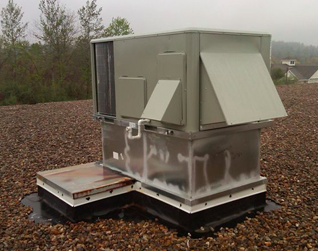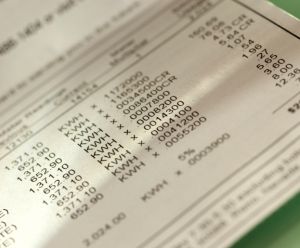Practicing energy efficiency is a bit like exercise; you know it’s good for you, but you don’t really have the time to deal with it.
If this is true for the average homeowner, it is even truer for an operator of multiple small commercial facilities, such as restaurants or retail locations. But, since this is early January, let’s resolve to try harder, and look at a few ways to wring out the old way of looking at energy while you ring in the new year.
 Resolution 1: Capture the low hanging fruit
Resolution 1: Capture the low hanging fruit
There are a few things that can be done as part of day to day operations that should take little extra time, but can reduce energy spending.
If you have programmable thermostats installed at your locations, or mechanical lighting controls, enlist the store managers to ensure the settings are where you want them to be in order to properly balance customer (and staff) comfort with energy costs. Be sure to create meaningful thermostat setbacks after hours. (Don’t be afraid to raise cooling and lower heating settings by as much as 8 degrees for optimal savings). Lighting controls should ensure that most, if not all, lights are off when the facility is unoccupied. And, don’t look just at the schedules; it would not be surprising if some of your thermostats were set to the wrong time (are adjustments made routinely for Daylight Savings Time?) or even the wrong day of the week.
With or without lighting controls, reinforce policies around equipment and lighting schedules. Put these schedules in prominent places, and make sure to provide feedback to staff members who do and do not regularly adhere to schedules.
Finally, maintain all equipment on a regular basis. Make sure HVAC filters are changed and coils cleaned; this can have a meaningful impact on energy costs, as well as on the life of the equipment.
 Resolution 2: Count your assets
Resolution 2: Count your assets
Just what equipment do you have in each of your locations? How old are your critical assets, and what condition are they really in? If you don’t know, you are in very good company; most companies don’t really know the details of what they have where.
But the old adage that “you can’t manage what you don’t measure” applies here. If you don’t know exactly what equipment you have and what condition it is in, it is much more difficult to efficiently plan and prioritize maintenance programs, much less equipment replacement programs.
Why is this important? There are several reasons. First, age is a critical factor in prioritizing equipment replacement, since older units generally start to become expensive to maintain. Furthermore, older equipment tends to start using more energy, as well. Moreover, HVAC equipment has become much more energy efficient, so replacing older equipment is one way to lower energy costs.
Second, specific equipment property data can also be helpful in diagnosing why some locations are more expensive to operate than others. For example, if some facilities have a much higher ratio of HVAC tonnage to square footage than others in the same general region, that could explain why their energy costs are out of line.
Third, equipment condition is very important as well. Do the condenser coils look old and worn? Is there visible standing water? These are signs that, at a minimum, an HVAC unit needs to be serviced, but may also indicate that replacement will be necessary sooner rather than later. And along with poorly maintained equipment comes higher energy costs.
Capturing asset property and condition data need not cost an arm and leg. If you have regularly scheduled equipment maintenance, the marginal cost of capturing the data could be fairly small. Alternatively, you can capture the data when you replace a piece of equipment or install a new thermostat. Apps are available that make it painless to capture the data and keep it updated.
 Resolution 3: Track your spend
Resolution 3: Track your spend
To gain control of energy expenses, you need to understand what they are. There are options available for capturing and tracking utility bills, including both stand-alone software and managed services. The savings from identifying billing errors alone generally pays for these services. Tracking bills will enable you to benchmark facilities in order to identify and target those whose energy spend is outside the range of their peers. (To do this effectively, you should normalize for such factors as operating hours, square footage, utility rates, and weather.) Higher energy spend could signify issues such underperforming equipment needing repair or replacement, oversized equipment, or poor adherence to equipment schedules.
Resolution 4: Revisit actions you may have rejected in the past
If you have looked at replacement lighting in the past but rejected it as too expensive, you may want to look again. Prices for LED replacements, for example, have plummeted, and many new options are available. LEDs use 1/6 the energy of traditional lighting, and last 10 times as long. Moreover, the majority of utilities will provide rebates for LED lighting, resulting in a very strong return on investment.
Similarly, if you found that energy management systems (EMS) simply did not provide an ROI, a new review is likely to change your mind. Not only is the newer generation of systems much less expensive and less complex than those you might have looked at a few years ago (which were really designed for much larger buildings), they tend to be much easier to use and may offer more functionality. Some of the newer systems (which we refer to as “EMS 2.0”) actually offer a lot more. Rebates are also available for an EMS in many locations, so check with your local utilities. Even without a rebate, the right EMS might provide a payback in as little as 1 year.
Effectively tackling unnecessary energy use is complex, but can be undertaken in bite-sized pieces. Let 2015 be the year to start.
